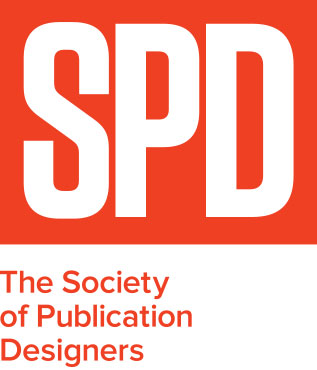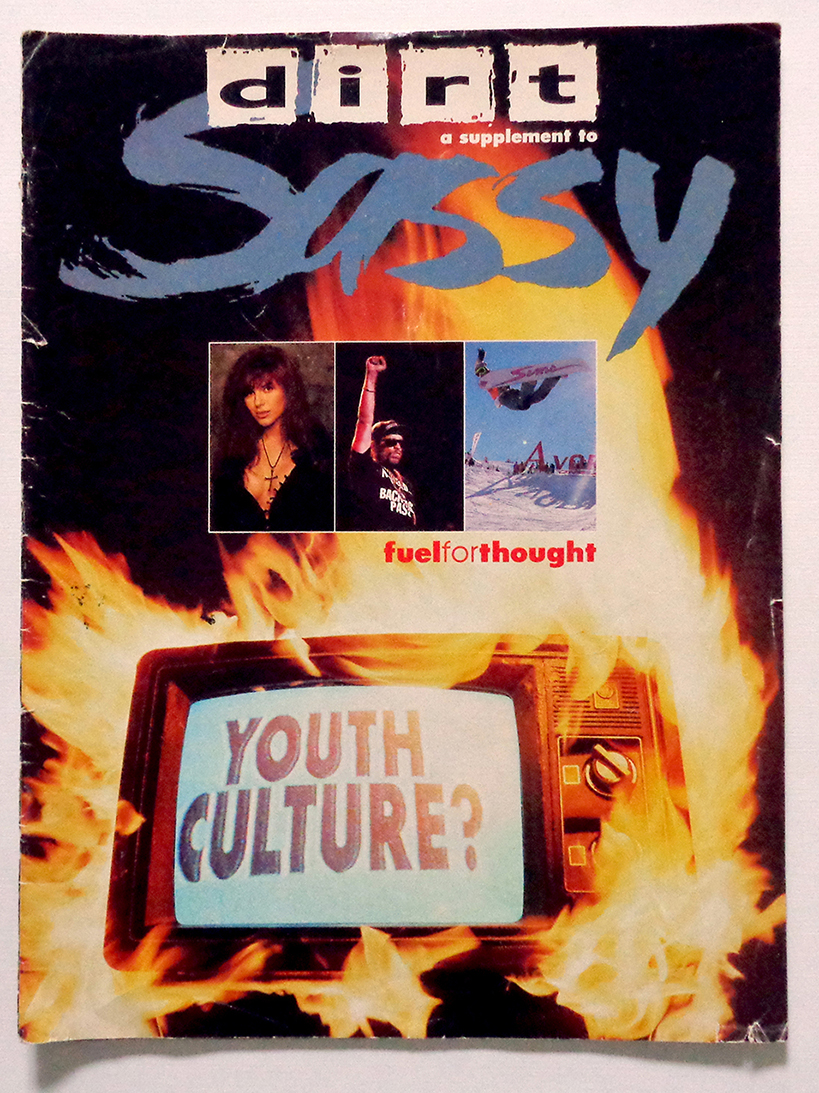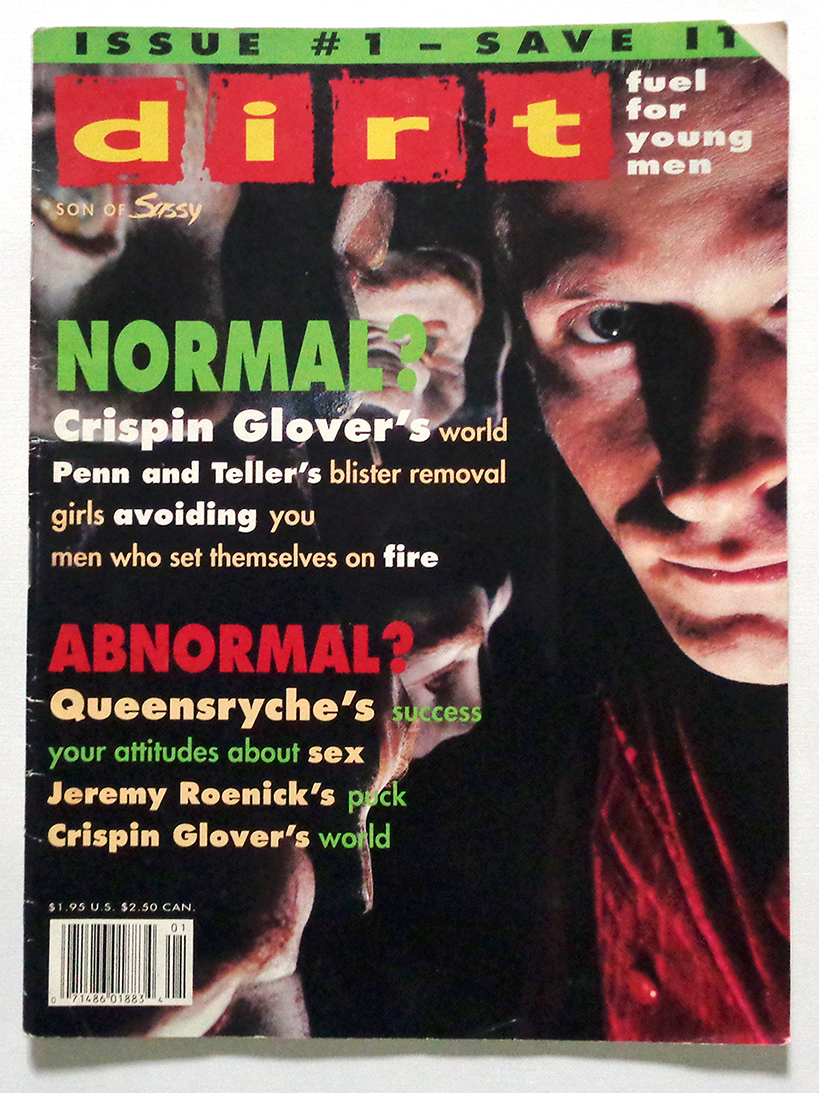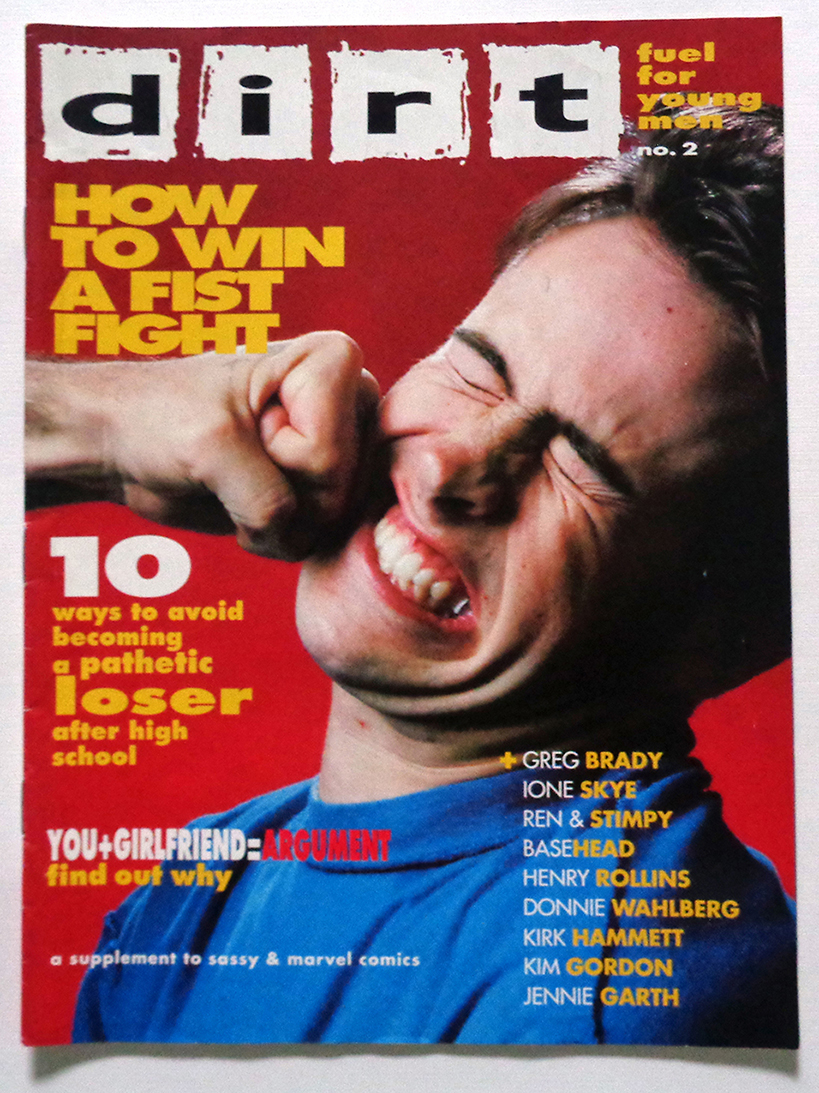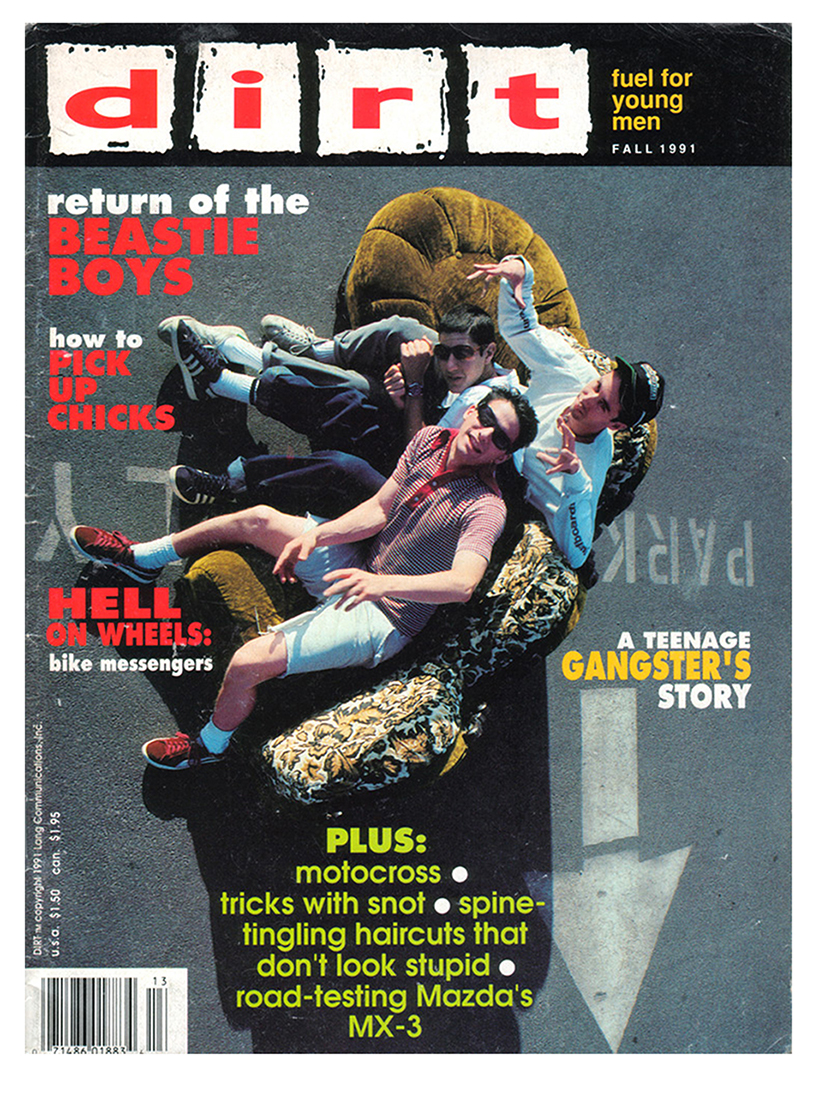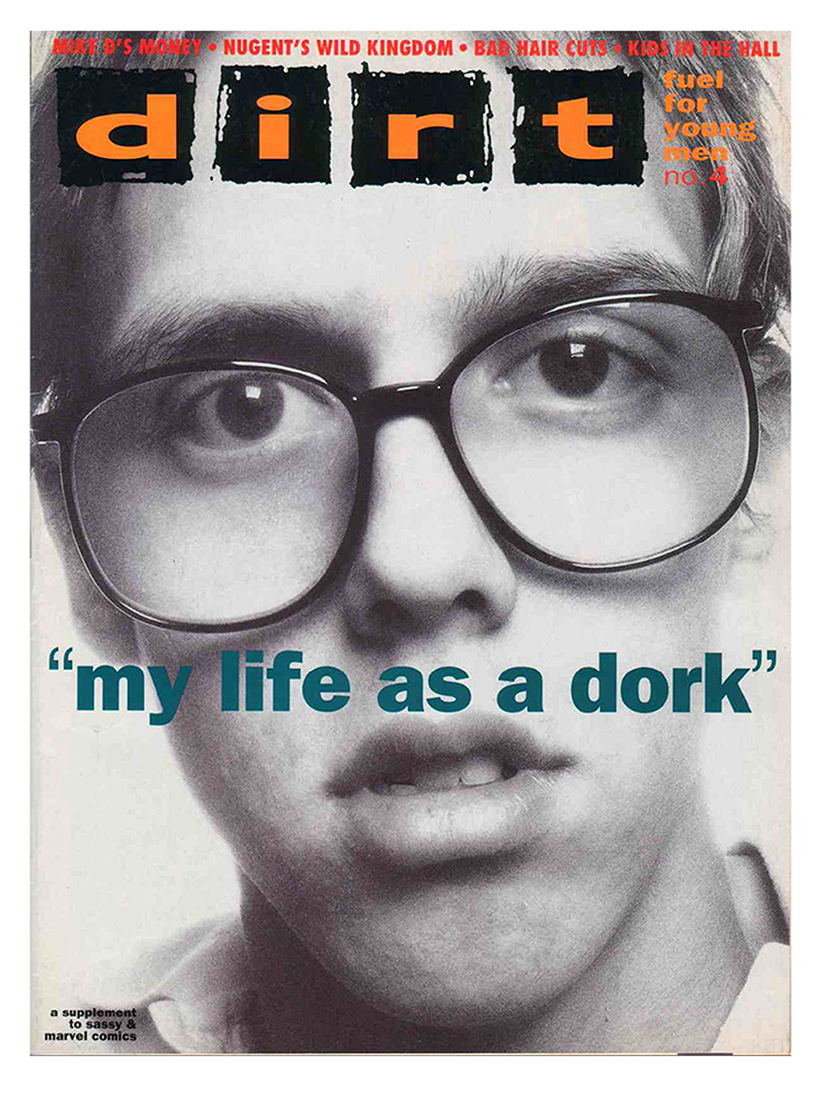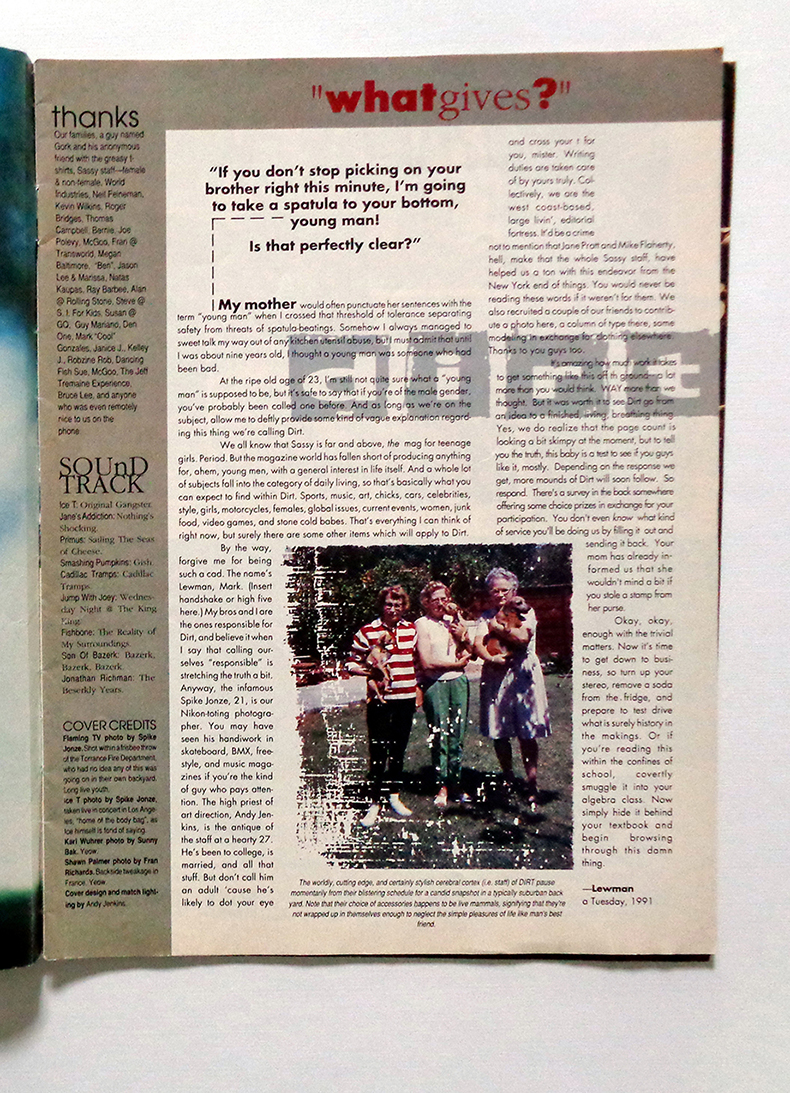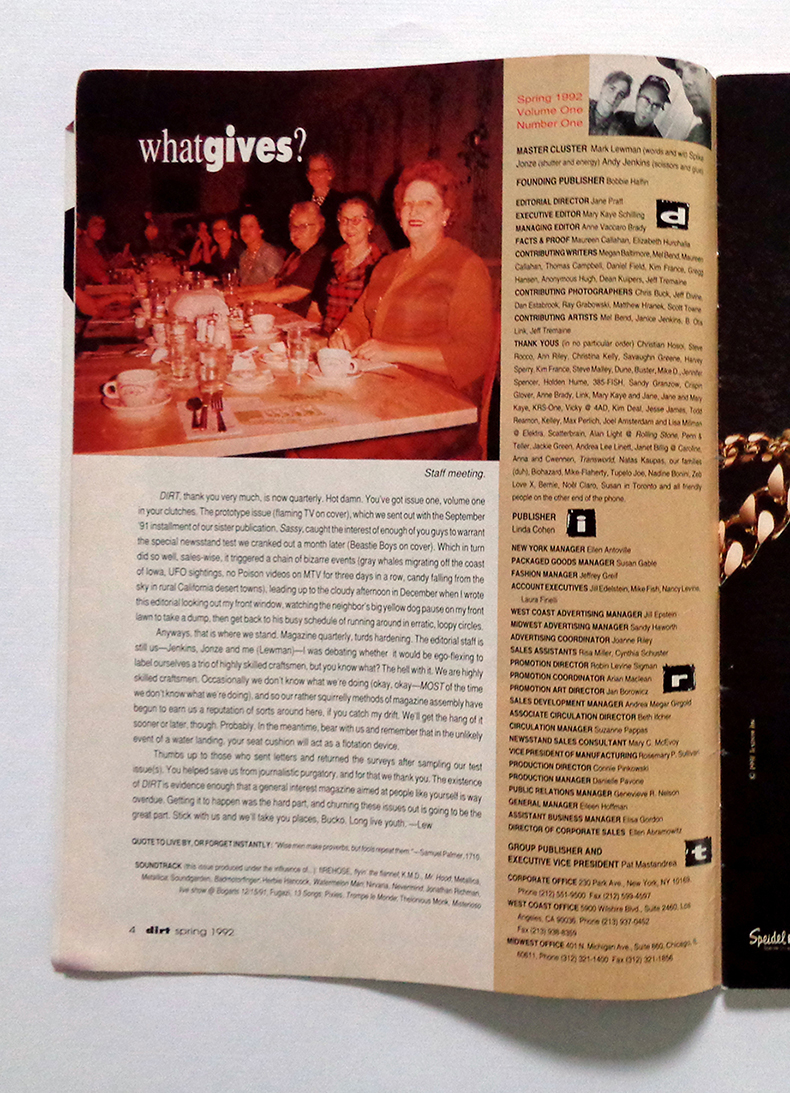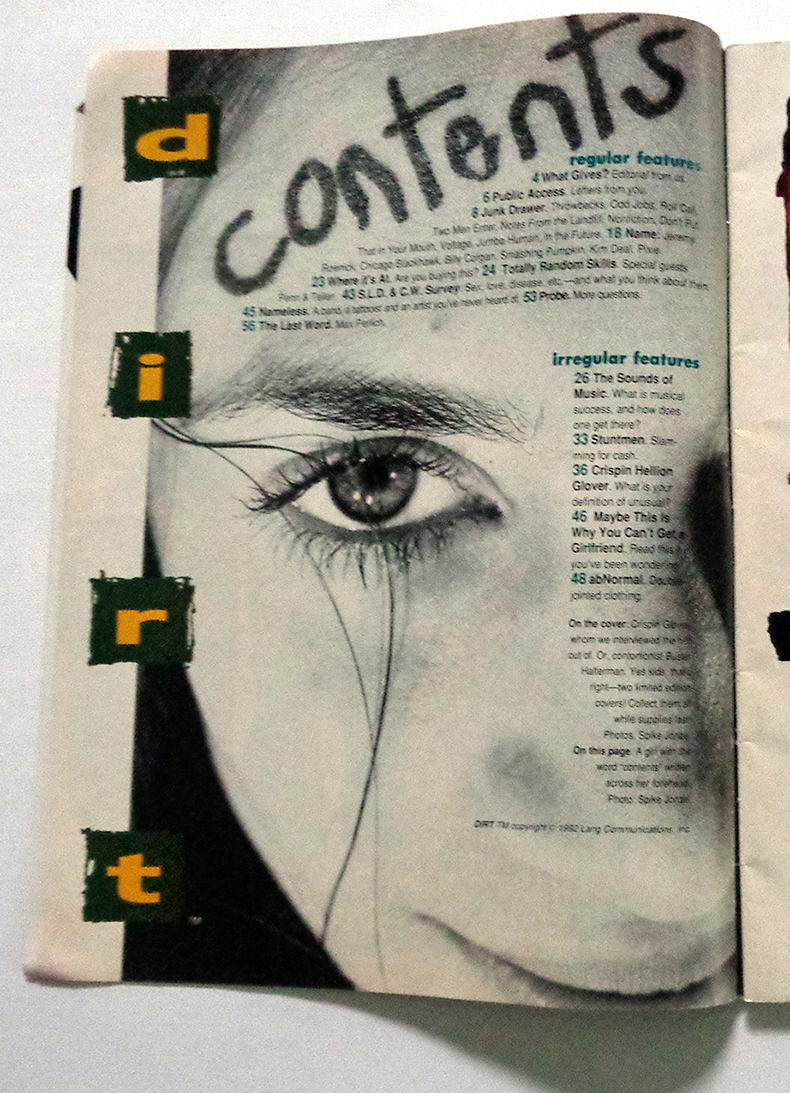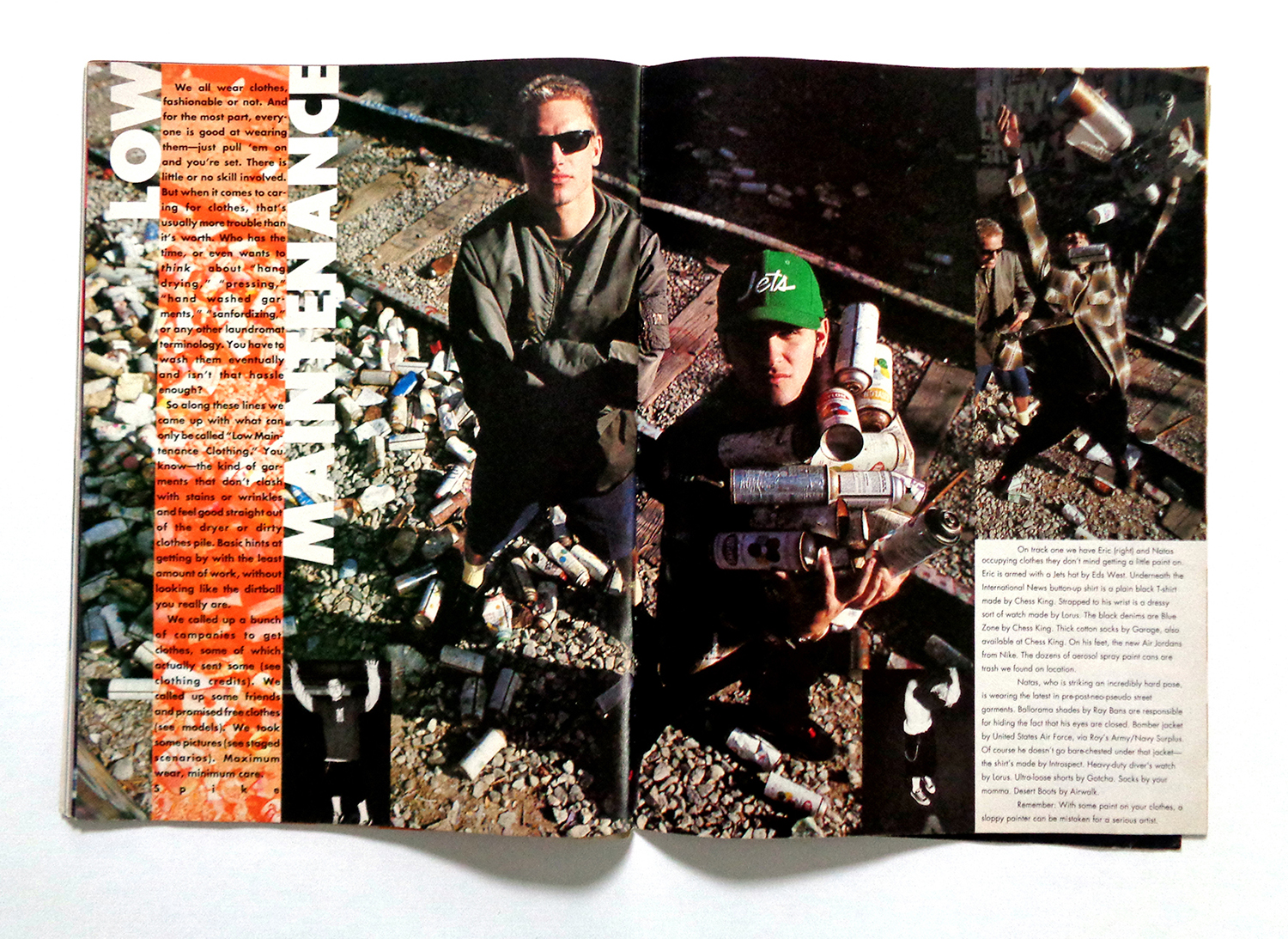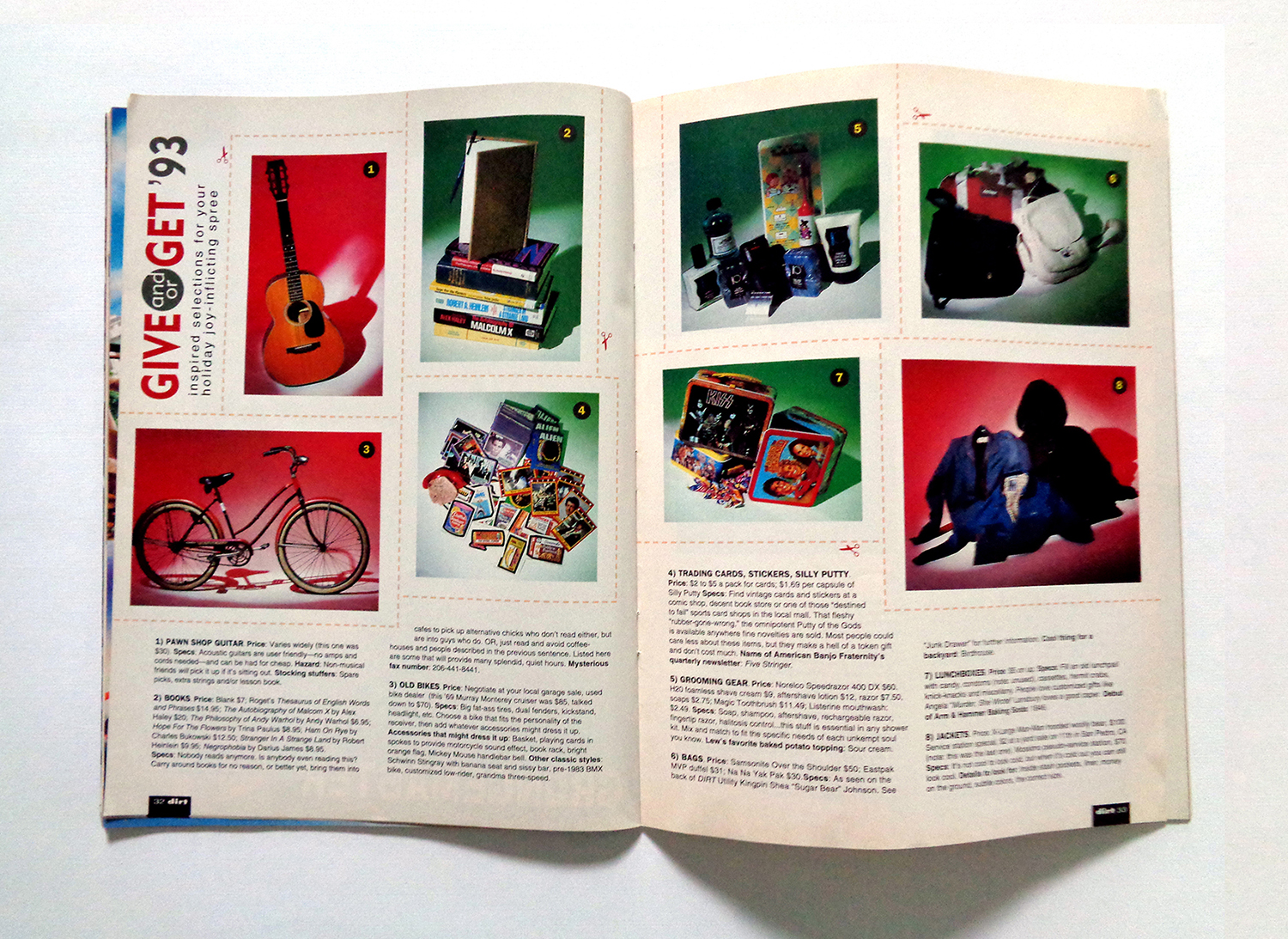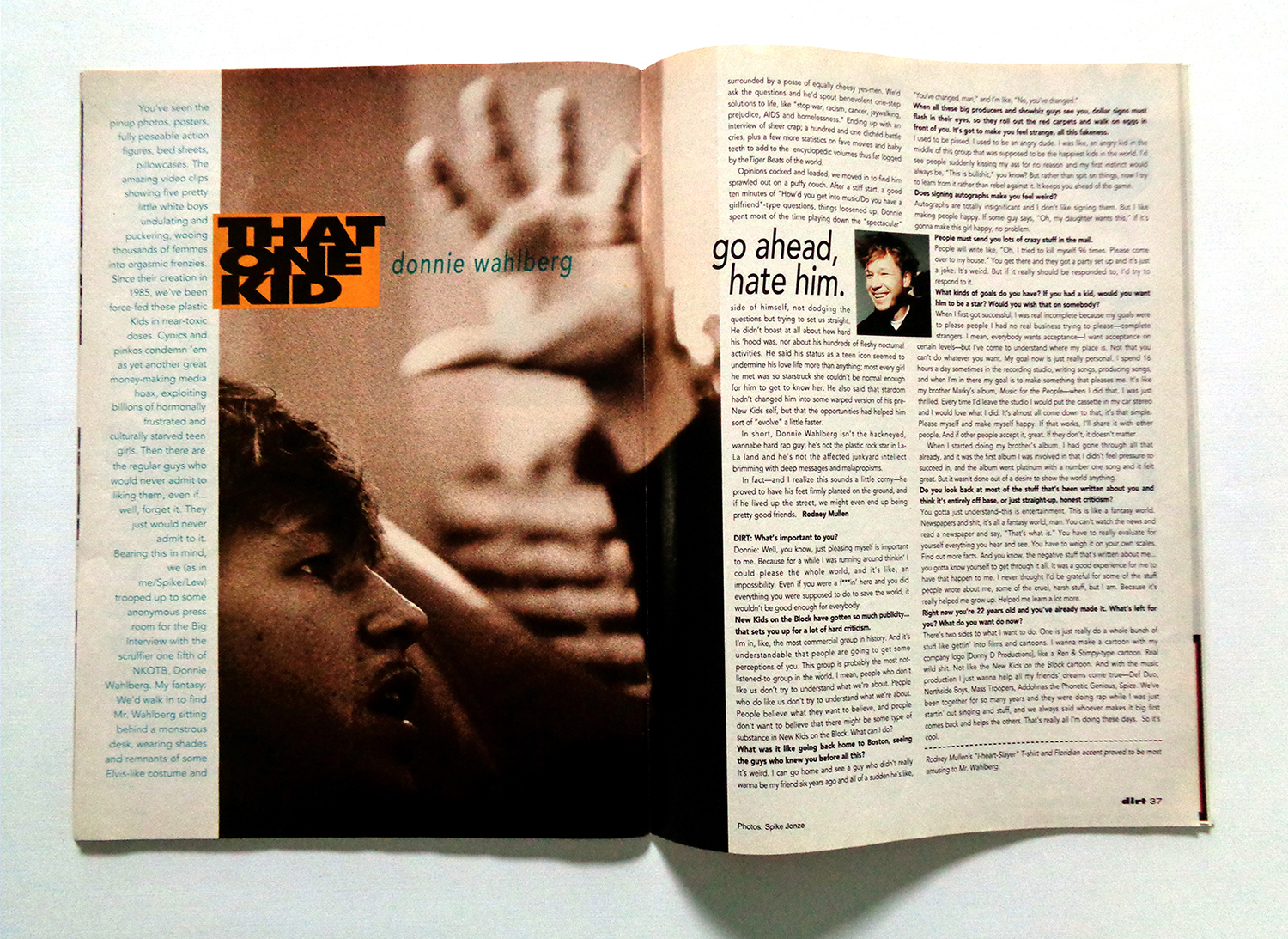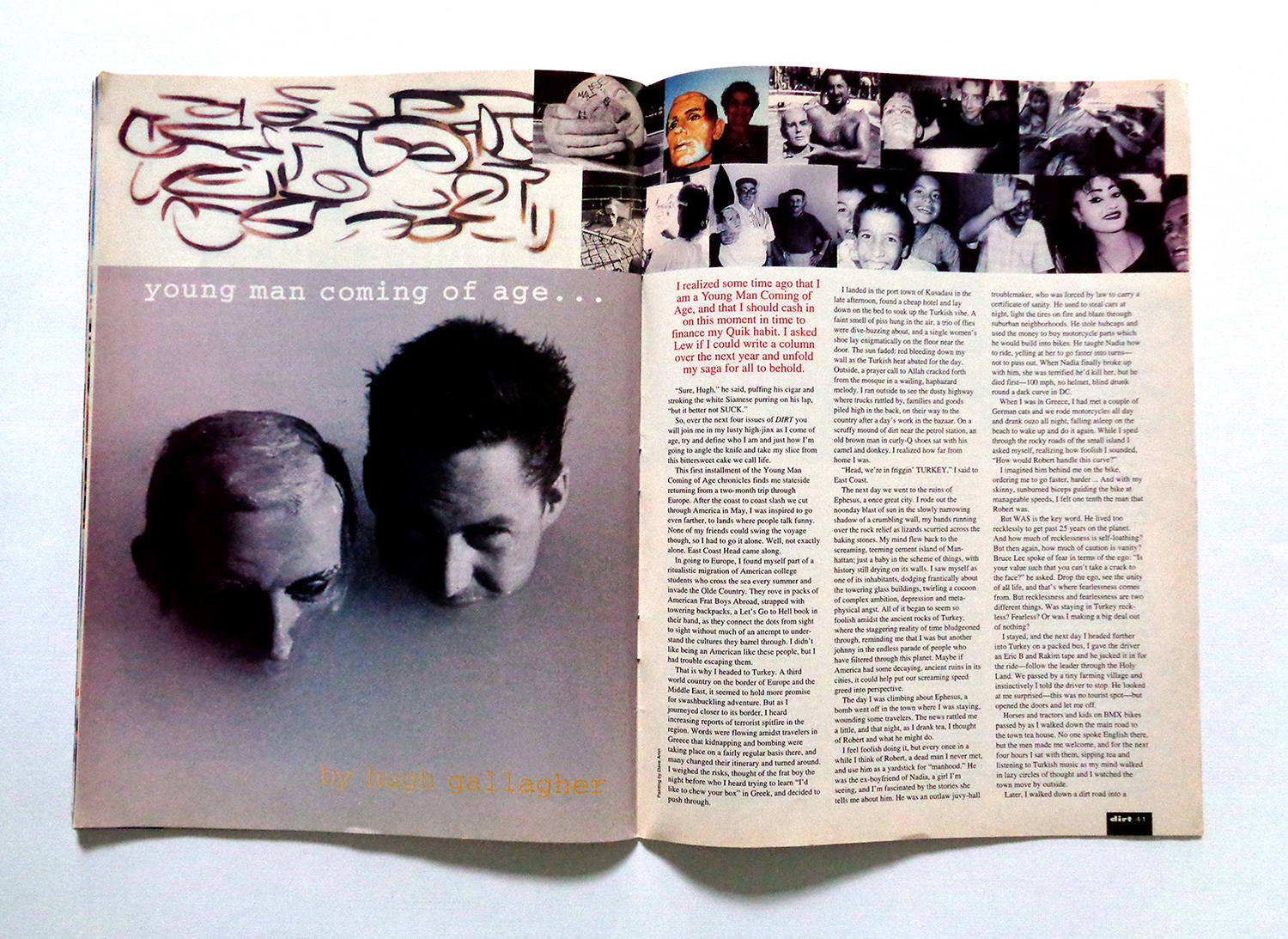Jamie Prokell, Creative Director at Men’s Health
/Jamie Prokell: It was 1991 and bundled free with my sister’s issue of Sassy magazine came one of the best things to ever make its way through the US Postal system, or at least that is what it meant to me that year. Here was Dirt Magazine, and on its pages were the weird mix of everything that I was searching for, years before the Internet provided a voice for every disenfranchised youth. I was a young boy in High School, awkward and interested in just about anything outside of the mainstream. Music, can’t find it on the radio? Let me listen. Clothes, only available by mail order from the other side of the United States in a size fives times what it should be? Where do I send the check? Dirt showed up and seemed to hold the answer to all of that. It was put together by a bunch of skaters just a few years older than myself, and with all of the same interests.
It only ran for 7 issues, but in those few issues they had the Beastie Boys, Mr. T, Crispin Glover and a then unknown Jason Lee getting punched in the face on their covers. It was original and was everything I was into.
SPD: What year?
JP: 1991-1993, it only published seven issues. Most of it came as a supplement to Sassy magazine.
SPD: What were you up to?
JP: I was a kid in a western Pennsylvania Catholic high school. One of three kids in the entire school who skateboarded. Awkward, unsure, and ready to rebel against anything. I was looking for anything that went against the “man,” who to me at that time was mainstream media and organized sports. I had been going through a steady diet of Thrasher, Transworld Skateboarding, Poweredge magazine, and anything printed that mentioned or pictured a skateboard. A world that existed across the United States in California and miles away from where I was at.
SPD: What magazine?
JP: The magazine was Dirt. A free supplement that originally came poly-bagged with an issue of Sassy. This was the first time I felt, how do these people have all of the answers to all of my questions and interests. Years later I came to understand that something this special comes from a staff of interested and interesting people all working together to answer these questions for themselves. But at that time, this magazine was like a peek into the bigger world, a world beyond Pittsburgh.
SPD: What was it that so enthralled you?
JP: I had been stealing my sister’s Sassy magazine for awhile, trying to figure out how I could understand girls, and where exactly I could find ones that were as cool as the ones in the pages of Sassy magazine. When just like a wish granted, came the answer I was looking for. Here was a magazine that was all about my life. It talked about clothes, haircuts, music, skateboarding, and girls. But the pages were filled with people who I had become familiar with from skate shops, Thrasher and Transworld Skateboarding. Yes, I thought! This was another skateboard magazine. But this one covered everything that you did while you were not skateboarding. One of my favorite articles, that I still remember today, took Jeff Tremain (who later became famous for producing the Jackass franchise) and slowly cut his long hair into 8 different hair lengths and gave names to each style. They reviewed things no other magazine at that time were: Candy, Shoes, Swatches, comics, hair and girls. And somehow this first issue came to my house, and for free. I felt like I had been chosen. From that point on every time I went to the mall I would go to the small newsstand near the exit and check for the next issue. At this point in my life I had no idea that there was any sort of publishing schedule. So five times a week, I would be scouring the newsstand, for any clue a new issue was on its way.
SPD: Do you know now who the creatives were?
JP: I’m not sure I totally understood that all of the people featured in the pages weren’t involved with creating the issue. But I was aware Andy Jenkins, Spike Jonze, and Mark Lewman were leading the charge. These were the same names that I had been seeing in every issue of Transworld Skateboarding, and Thrasher each month. They were putting their friends in fashion shoots and other stories. It was amazing to see Natas Kaupus, Jason Lee, Ray Barbee, all of these skateboarders just doing things that I was not seeing anywhere else. It made the lifestyle real to me, and that was what I fell in love with. Looking back at the old issue now, I’m not sure the design was what grabbed me, but the sincerity and intention is still as real as it was all of those years ago. And that’s what spoke to me.
staff photo of mark lewman, andy jenkins, and spike jonze
SPD: How does that inform your creative now?
JP: I can still remember the feeling of reading those pages. It was the realness of the stories. Today I try to put myself in the place of the reader and ask myself what would I want this story to be. What do I want to see. What would excite me. And I try to create/design stories to answer that. What would get me excited? Sometimes it works out, sometimes it doesn’t. But at least I feel I am trying to create something I would spend time exploring.
